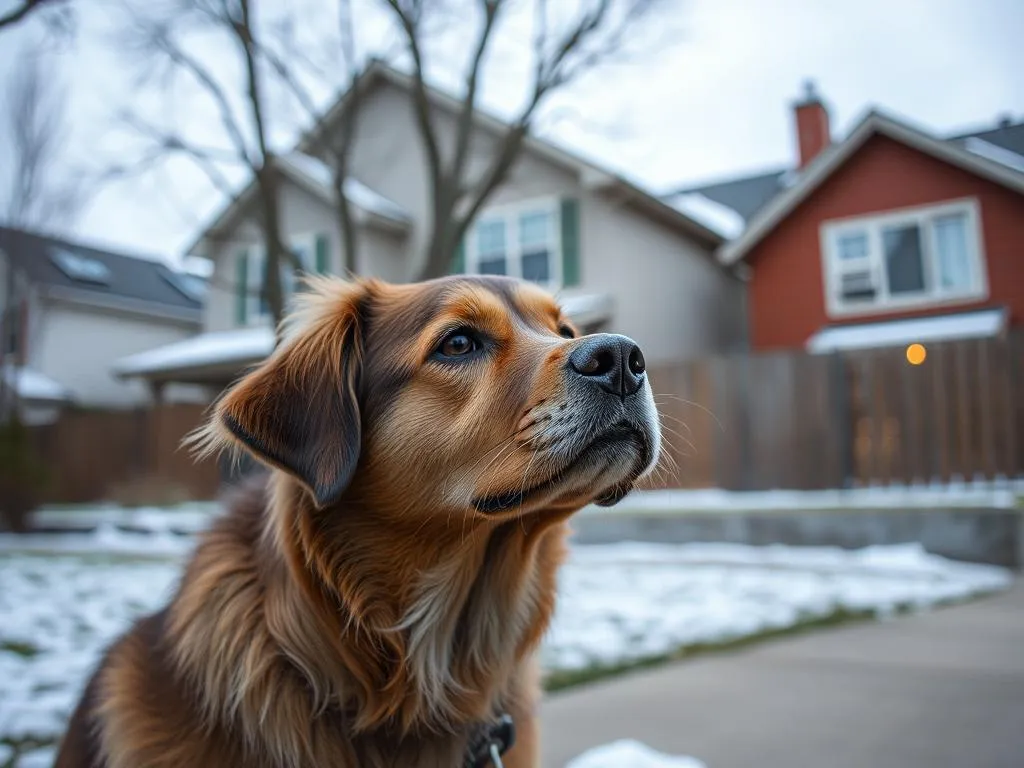
Leaving a dog outside for extended periods can raise concerns about the pet’s well-being. Many dog owners may not recognize the potential risks associated with this, leading to distress for both the animal and the neighbors. Addressing this situation requires sensitivity and awareness. Here’s a guide on how to navigate this challenge effectively.
Understanding the Situation
Why Dogs are Left Outside
There can be various reasons why a neighbor might leave their dog outside. Some may believe that dogs prefer to be outdoors, while others might be unaware of the implications of leaving their pets unattended. Factors such as a busy lifestyle, lack of knowledge about dog care, or even cultural beliefs can contribute to this behavior. It’s essential to approach the situation with empathy, understanding that the owner may not have malicious intent.
However, leaving a dog outside for long periods can have serious implications. Dogs require social interaction, mental stimulation, and protection from the elements. Prolonged exposure can lead to stress, anxiety, or even physical health problems. Therefore, recognizing the signs of a problematic situation is crucial.
Signs of a Problematic Situation
Identifying whether a dog is being neglected is vital. Some signs to look out for include:
- Excessive barking or howling: If the dog is vocalizing more than usual, it may indicate distress.
- Signs of neglect: Look for lack of food, water, or adequate shelter. If the dog appears thin or unhealthy, these could be red flags.
- Weather conditions: Extreme temperatures can pose significant risks to a dog’s health. In cold weather, dogs can suffer from hypothermia, while in hot weather, they may face heatstroke.
Assessing the Dog’s Well-being
Basic Welfare Check
Before taking any action, consider performing a welfare check on the dog. This involves:
- Checking access to food and water: Ensure the dog has fresh water and food available. If food and water are absent, this is a cause for concern.
- Observing for signs of health issues: Look for symptoms such as limping, unusual behavior, or signs of stress (e.g., panting excessively, pacing).
Understanding Local Laws and Regulations
Familiarizing yourself with local animal control laws can provide clarity on what constitutes animal neglect. Regulations vary by area, but many jurisdictions have laws that protect pets from abandonment and neglect. Knowing these laws can empower you to take appropriate action if necessary.
Initiating Communication with Your Neighbor
Approaching the Neighbor
Engaging with your neighbor about their dog’s situation can be sensitive. Here are tips for starting a conversation:
- Choose the right time: Approach your neighbor when they seem relaxed and available for a chat.
- Express concerns without confrontation: Use “I” statements to share your observations. For instance, “I’ve noticed your dog seems to be outside quite a bit, and I’m concerned about their well-being.”
Offering Help and Resources
Sometimes, neighbors may not be aware of the resources available to help them care for their pets. Consider suggesting local pet care services or dog walkers to ease their burden. You might also provide information about dog welfare organizations that can offer support and advice.
Escalating the Situation If Necessary
Documenting the Issue
If your initial conversation does not lead to any changes and you continue to notice distress in the dog, it may be time to escalate the situation. Document the issue by:
- Keeping a log of incidents: Record dates, times, and specific behaviors you observe. This will create a clear picture of the ongoing situation.
- Taking photos or videos: If appropriate, capture evidence of neglect to support your concerns.
Contacting Local Authorities
If the situation does not improve and you believe the dog’s well-being is at serious risk, it may be necessary to involve local authorities. Here’s how to proceed:
- When to involve animal control or law enforcement: If you see signs of neglect, such as lack of food and water, or if the dog is left outside in extreme weather conditions.
- What information to provide when making a report: Be prepared to share your documented observations, any evidence you’ve gathered, and specific details about the dog’s condition.
Alternatives to Consider
Community Resources and Support
Beyond direct intervention, there are community resources that can be beneficial. Local animal shelters and rescue organizations often provide assistance and outreach programs aimed at educating dog owners on responsible pet care. Engaging with these organizations can help foster a culture of awareness and compassion for animals within the community.
Creating a Neighborhood Pet Care Network
Consider spearheading a community initiative to create a neighborhood pet care network. This can foster relationships among pet owners and encourage shared responsibility for the welfare of all pets in the area. Here’s how to get started:
- Organize community meet-ups: Create opportunities for pet owners to gather, share tips, and discuss pet care best practices.
- Share resources: Establish a list of local dog walkers, pet sitters, and vet services that owners can access easily.
Conclusion
Addressing the issue of a neighbor leaving their dog outside can be challenging but is essential for the well-being of the animal. By understanding the situation, assessing the dog’s health, communicating effectively with your neighbor, and knowing when to escalate the matter, you can take responsible action.
Your efforts can significantly impact the dog’s quality of life and encourage a more pet-friendly neighborhood. Remember, compassion and understanding can go a long way in resolving these situations thoughtfully. Community support is also vital in ensuring that all pets receive the care and attention they deserve.
Engaging in these efforts not only helps the individual dog but also fosters a stronger sense of community and responsibility among pet owners. Together, we can ensure that our furry friends lead happy, healthy lives in their homes.









